EXHIBITIONS ARCHIVE
2023
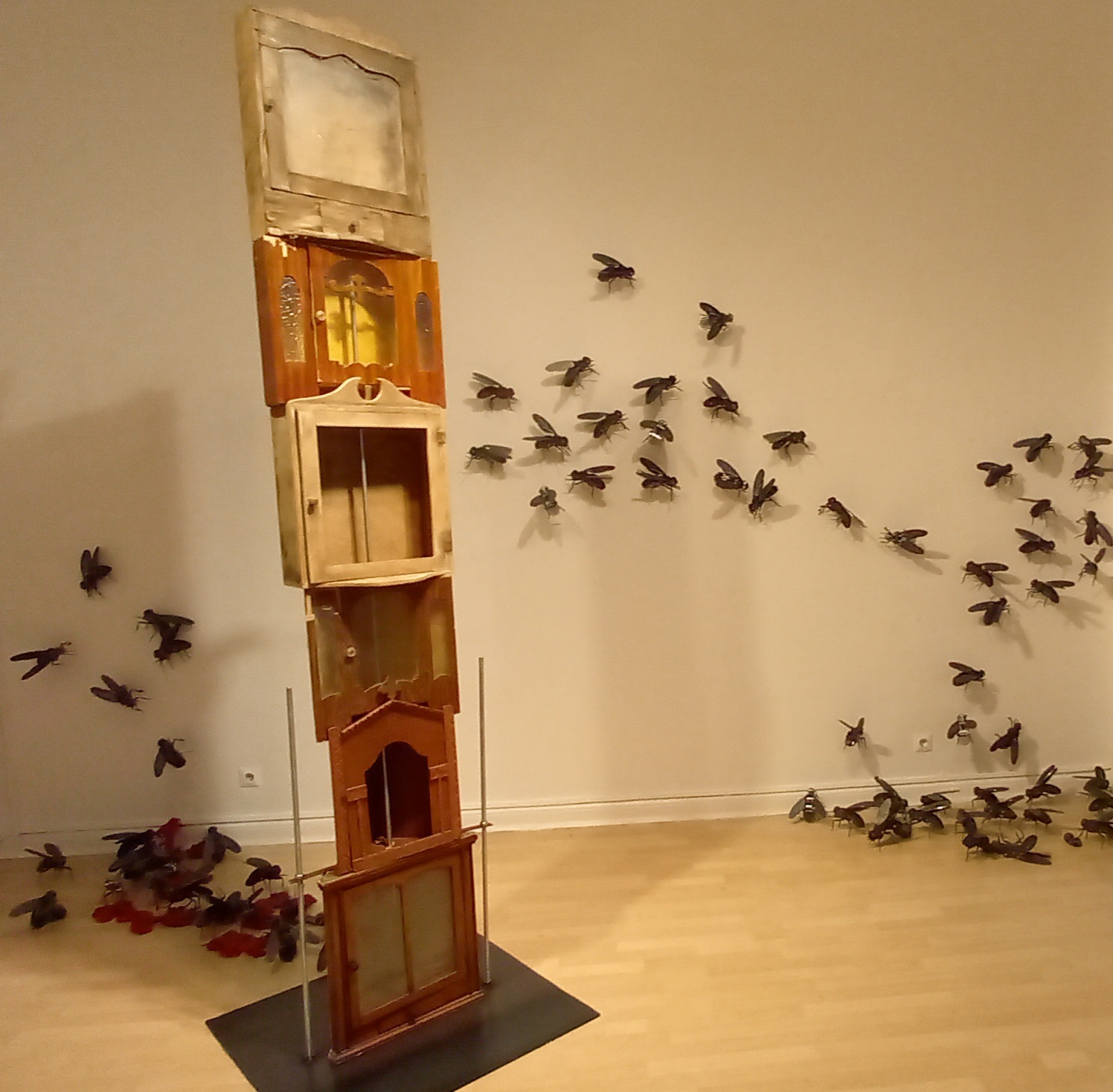
“Empty Shaping" DURATION OF THE EXHIBITION 05-04 TO 31-05-2023 Form is isomorphic in visual language with shape and ultimately with the form of the art object. Content is produced by form and vice versa. But what does a shape enclose? The void as a fundamental dimension of its existence. Like Heidegger's vase existing through the void or else the void is the drawing of the vase. The confrontation with the question of emptiness in relation to the aesthetic experience of any form, then, involves the characteristics of a dialectic of the aesthetic with the form and multiplicity of the produced object, which we call a work of art. From representation to conceptual logic, and through the freedom of the non-catholicity of aesthetics in the measure of an exhibition containing the contradiction of the above relations, the concept of emptiness is defined through the visual language. The void as the spatiality of empty space, the void as a philosophical consideration, the void as a representation of the structural lack of the subject that no object "covers". The empty exhibition space welcomes heteromorphic objects that over-define the void either as inverted versions of a discourse of "flight" as a concept of the intermediate void in William Blake's poetics through the image of the fly as fly-flight (Kontosfaris), the metallic drawing of the archetypal cross as another emptiness (Sendzas) and finally in the installation-concept that re-conceptualizes space as the body-of-the-void (Alexandrou). The "raised fists" in his work as a repetitiveness of a necessary signifier, that of rebellion, create with the barcode they bear and which is at the disposal of the viewer to be led to the "kryptonome", a "blank shape" of the subject that rebels, but which invites us at the same time to seek another identity. G.Mitrou, curator
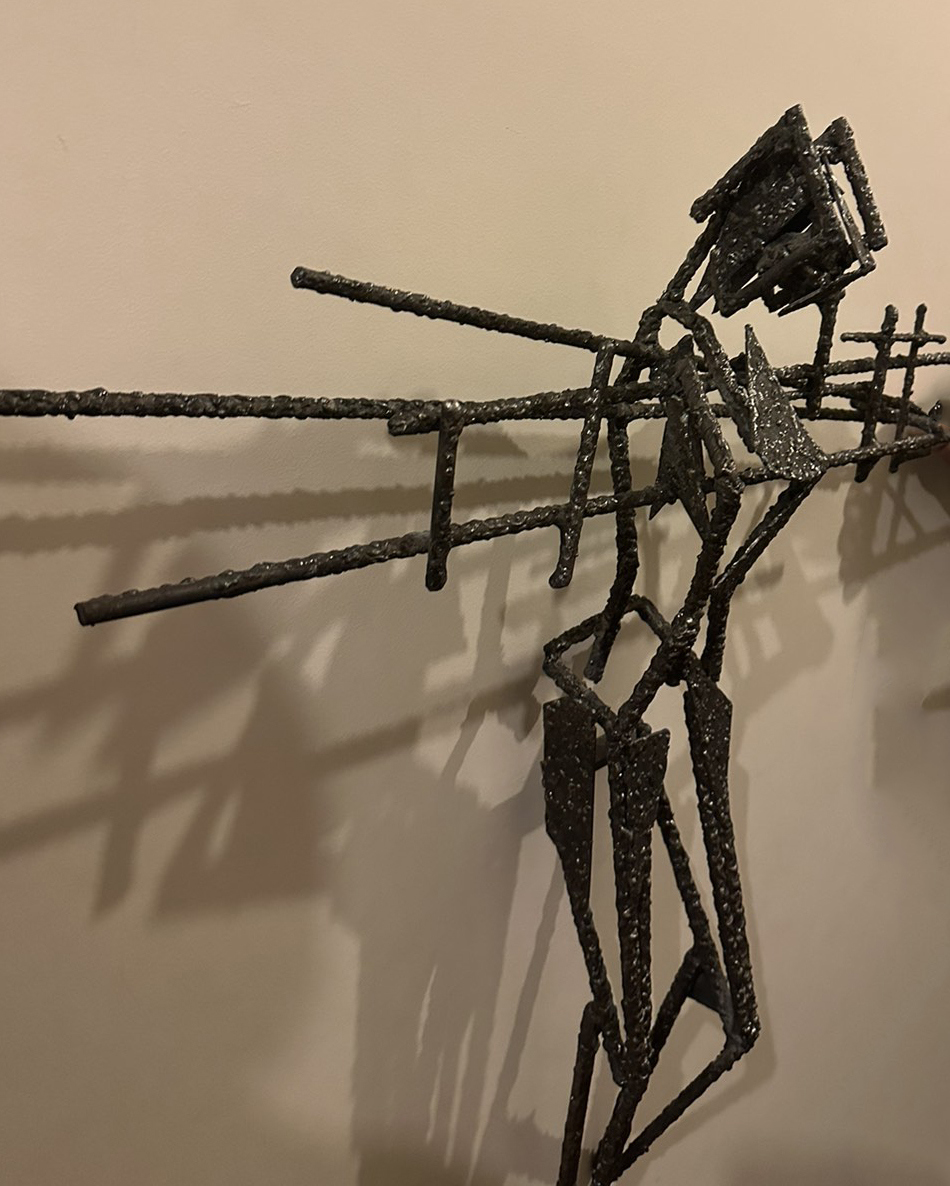
“Empty Shaping" DURATION OF THE EXHIBITION 05-04 TO 31-05-2023 Form is isomorphic in visual language with shape and ultimately with the form of the art object. Content is produced by form and vice versa. But what does a shape enclose? The void as a fundamental dimension of its existence. Like Heidegger's vase existing through the void or else the void is the drawing of the vase. The confrontation with the question of emptiness in relation to the aesthetic experience of any form, then, involves the characteristics of a dialectic of the aesthetic with the form and multiplicity of the produced object, which we call a work of art. From representation to conceptual logic, and through the freedom of the non-catholicity of aesthetics in the measure of an exhibition containing the contradiction of the above relations, the concept of emptiness is defined through the visual language. The void as the spatiality of empty space, the void as a philosophical consideration, the void as a representation of the structural lack of the subject that no object "covers". The empty exhibition space welcomes heteromorphic objects that over-define the void either as inverted versions of a discourse of "flight" as a concept of the intermediate void in William Blake's poetics through the image of the fly as fly-flight (Kontosfaris), the metallic drawing of the archetypal cross as another emptiness (Sendzas) and finally in the installation-concept that re-conceptualizes space as the body-of-the-void (Alexandrou). The "raised fists" in his work as a repetitiveness of a necessary signifier, that of rebellion, create with the barcode they bear and which is at the disposal of the viewer to be led to the "kryptonome", a "blank shape" of the subject that rebels, but which invites us at the same time to seek another identity. G.Mitrou, curator
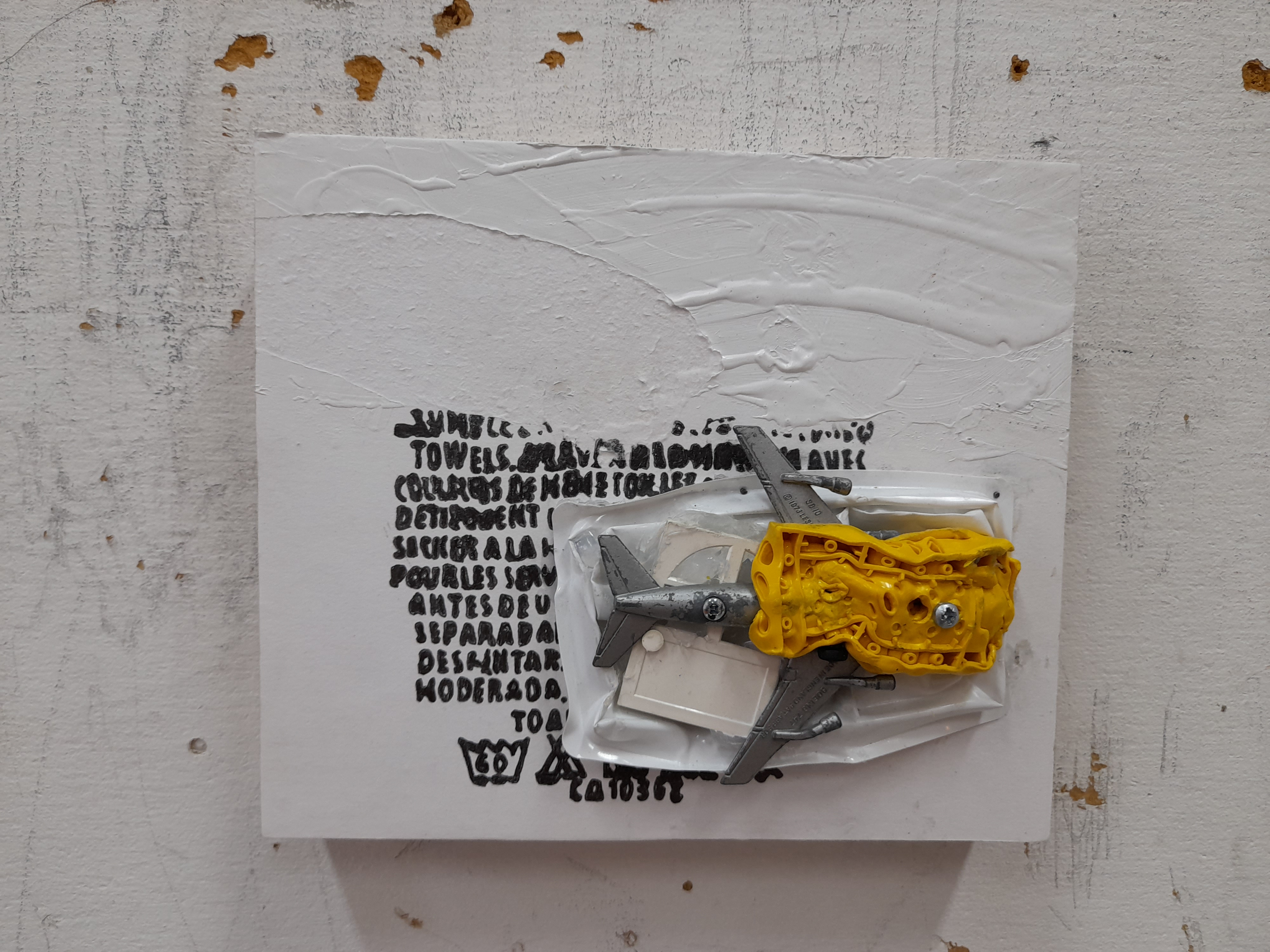
The compositions of Giorgos Michalopoulos, "constructions" in the direction of the poetry of the anti-text, as a projection screen, function as pictorial associations. His visual statement highlights the possibility of composition with fragments of different materials, usually industrial in the logic of ready-mades, as well as ways of organization from a variety of visual genres. Michalopoulos creates assemblages similar to narrative handmade techniques that provide diffusion and concealment of information simultaneously. Signs and symbols give birth to a new visual culture, where fruitful exchanges and interactions shape meaningful de-printing of timeless linguistic codes. Konstantinos Tsakiris' experiments are largely rooted in reflections on the materials used by the artists of arte povera and its descendants in order to emphatically state the direct contact with natural materials, such as wood, earth, stone, etc., as well as the need to express symbolic values far beyond the historical context. The reduction of form mainly to the basic geometric shapes, the circle, the triangle and the square, as well as the intense colour interventions contribute decisively to the sensory experience that the artist can share with the viewer. [Comments by art historian Thalia Stephanidou]
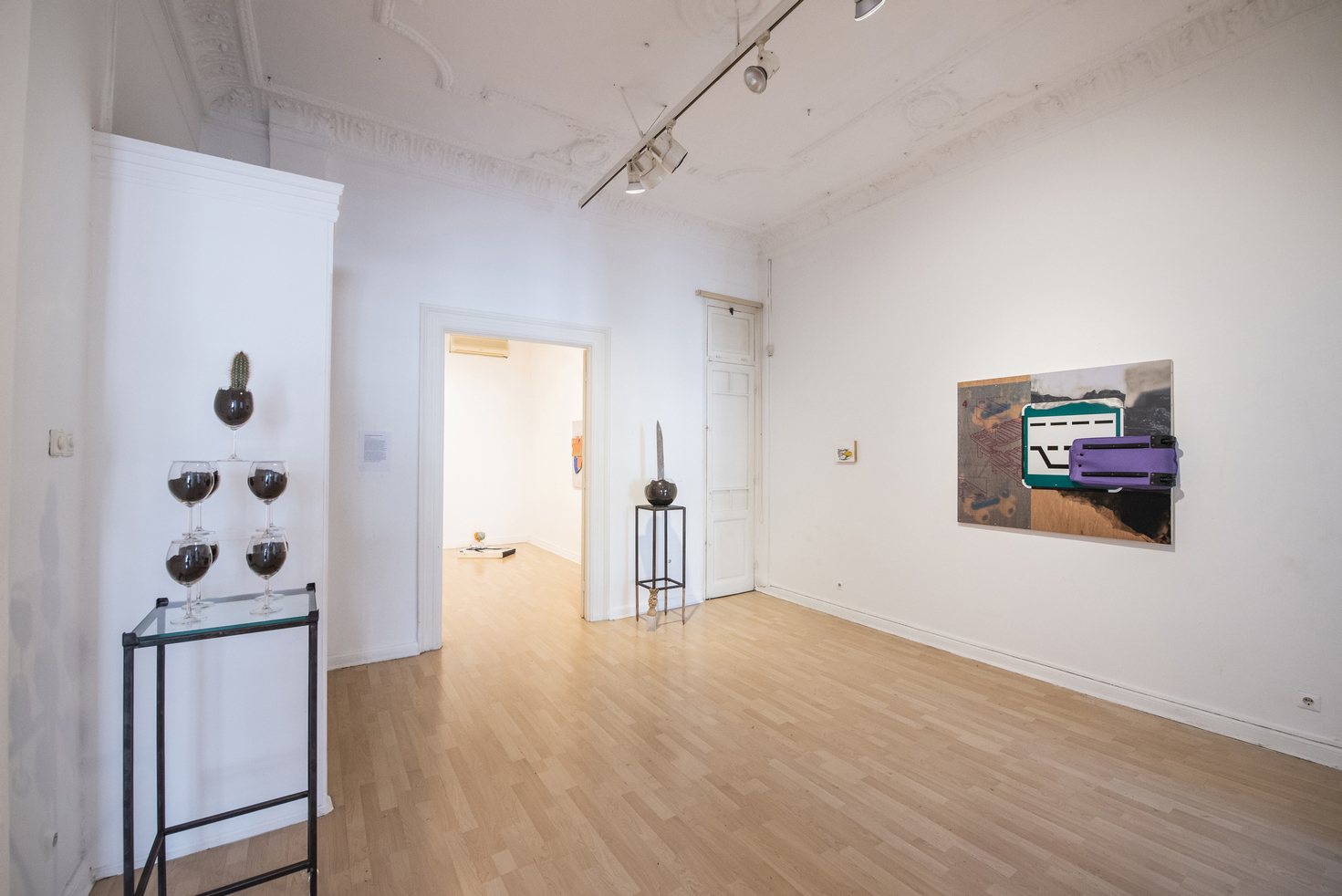
The compositions of Giorgos Michalopoulos, "constructions" in the direction of the poetry of the anti-text, as a projection screen, function as pictorial associations. His visual statement highlights the possibility of composition with fragments of different materials, usually industrial in the logic of ready-mades, as well as ways of organization from a variety of visual genres. Michalopoulos creates assemblages similar to narrative handmade techniques that provide diffusion and concealment of information simultaneously. Signs and symbols give birth to a new visual culture, where fruitful exchanges and interactions shape meaningful de-printing of timeless linguistic codes. Konstantinos Tsakiris' experiments are largely rooted in reflections on the materials used by the artists of arte povera and its descendants in order to emphatically state the direct contact with natural materials, such as wood, earth, stone, etc., as well as the need to express symbolic values far beyond the historical context. The reduction of form mainly to the basic geometric shapes, the circle, the triangle and the square, as well as the intense colour interventions contribute decisively to the sensory experience that the artist can share with the viewer. [Comments by art historian Thalia Stephanidou]
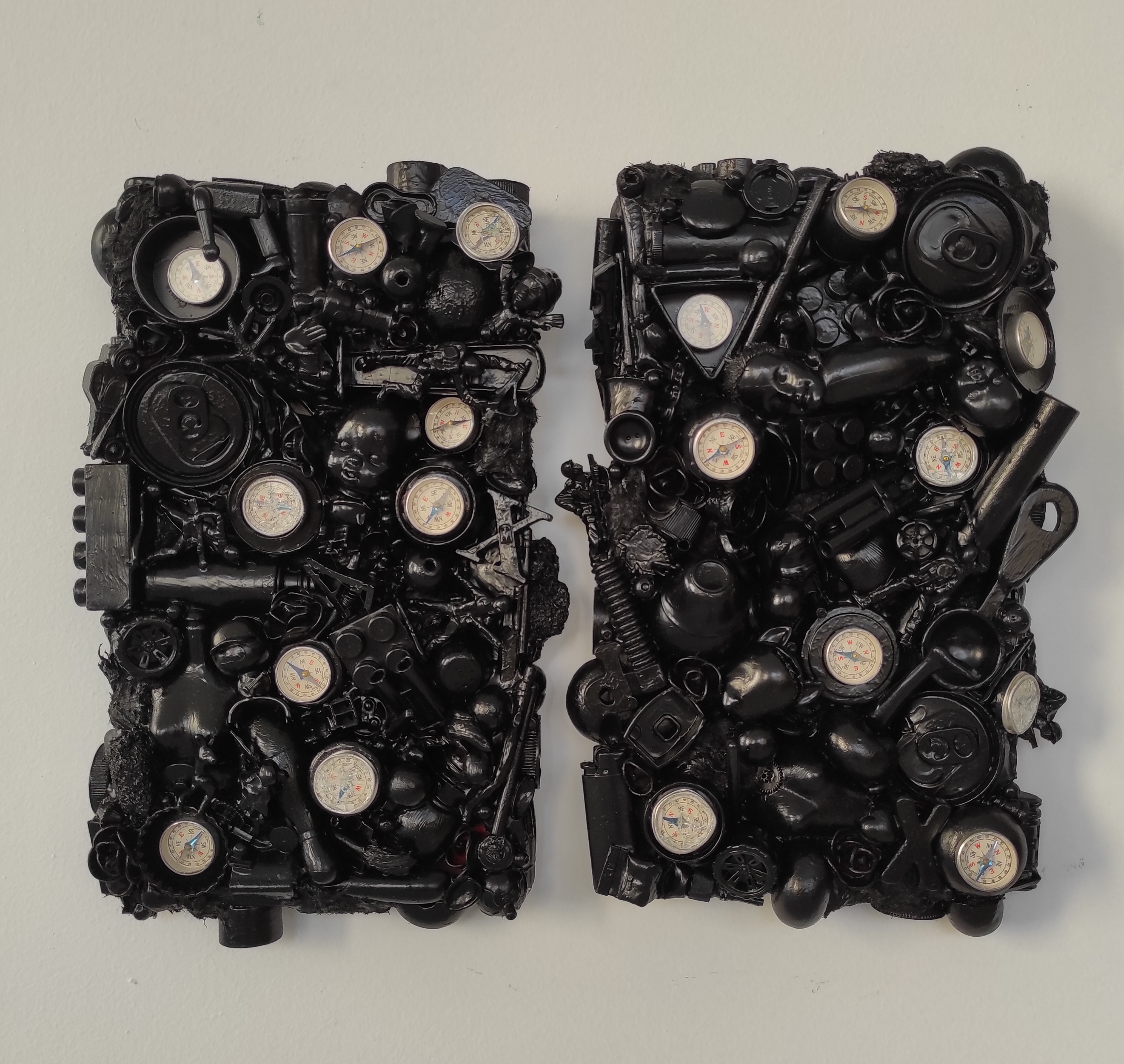
Penelope Akritidou_Vasilis Alexandrou_ Dimitris Ameladiotis_ Fotios Balas_ Olga Bogdanou_ Manolis charos_ Konstantinos Chatzitheodoridis_Kostis Damoulakis_ Athan Dapis_ Dimitris Dimitriadis_Sotiris Fokeas_Giannis Gagrinas_ Aris Georgiou_ Boris Georgitseli_ Melina Georgouda_ Theano Giannezi_Elena Hadjiathanasiou_ Haris Hilitsis_ Ljilja Jaric_Christos Kalfas_Dora Kapetan Labrou_Alexandros Kapetanou_Dimitris Kapetanou_Ellie Katsara_Katerina Katsiura_Peggy Kliafa_Charis Kondosphyris_Kostas Kloumis_ Nikos Kryonidis _ Andreas Laskaris_Stamatis Laskos_Emmanuela Liagou_Thomas Makinatzis_Konstantia Makri_Antigoni Manolidou_Giorgos Michalopoulos_Ioannis Monogios _Dimitris Palantzas_Giorgos Pantazis_Angeliki Papadopoulou_Anna Papavasiliou_ Maria Paschalidou_Sofia Pechlivanidou_Revecca Protopapa_Ion Rudolph_ Vasilis Sentzas_Eleftheria Stoikou_Mari Theofilou_Eleni Theofilktou _ Zefie Tiftiktsoglou_Konstantinos Tsakiris_Mantha Tsialiou_Maria Tsesmeli_ Sofia Vaggeli_George Vavatsis_Anastasios Veloudis_Vasilis Zografos
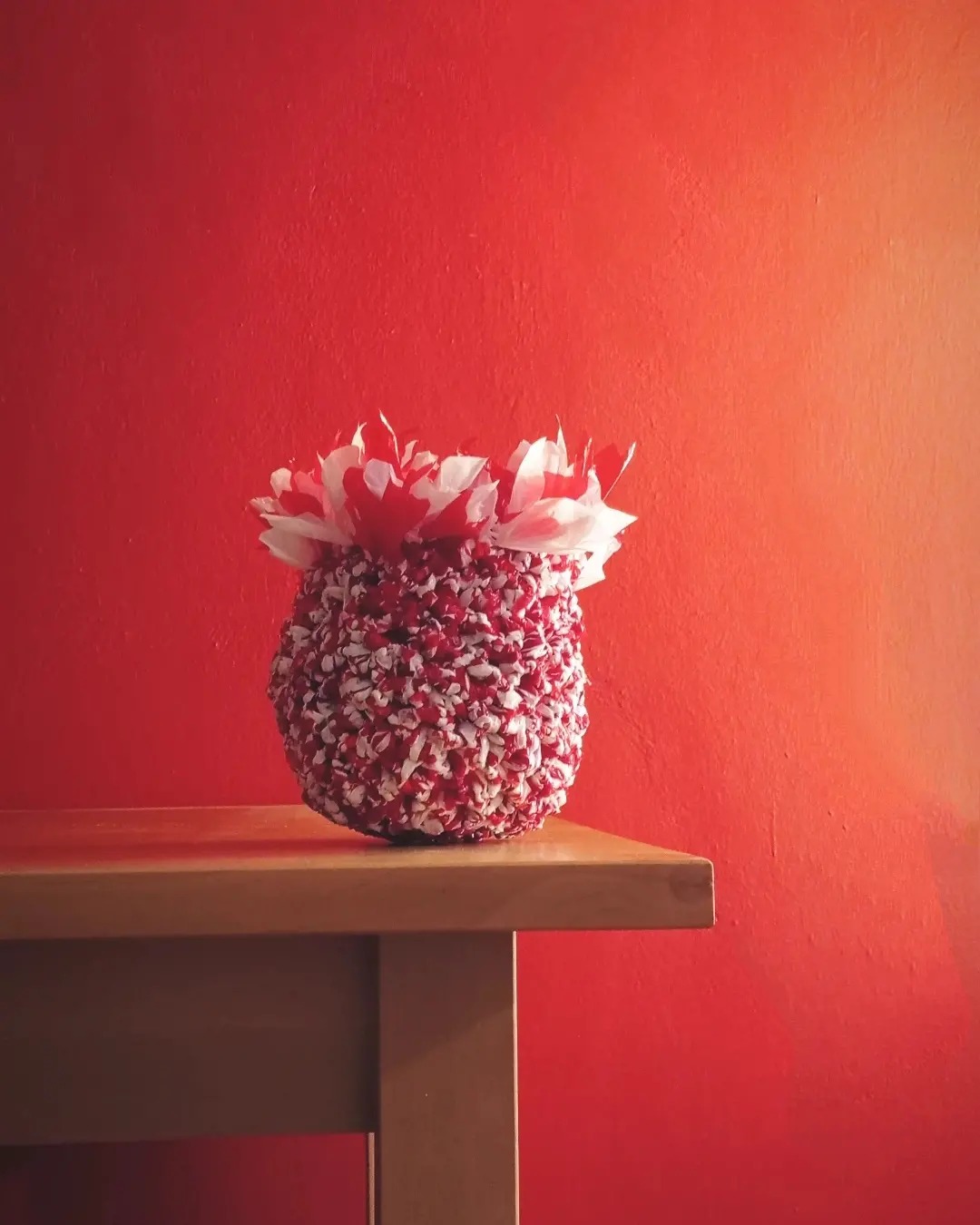
Penelope Akritidou_Vasilis Alexandrou_ Dimitris Ameladiotis_ Fotios Balas_ Olga Bogdanou_ Manolis charos_ Konstantinos Chatzitheodoridis_Kostis Damoulakis_ Athan Dapis_ Dimitris Dimitriadis_Sotiris Fokeas_Giannis Gagrinas_ Aris Georgiou_ Boris Georgitseli_ Melina Georgouda_ Theano Giannezi_Elena Hadjiathanasiou_ Haris Hilitsis_ Ljilja Jaric_Christos Kalfas_Dora Kapetan Labrou_Alexandros Kapetanou_Dimitris Kapetanou_Ellie Katsara_Katerina Katsiura_Peggy Kliafa_Charis Kondosphyris_Kostas Kloumis_ Nikos Kryonidis _ Andreas Laskaris_Stamatis Laskos_Emmanuela Liagou_Thomas Makinatzis_Konstantia Makri_Antigoni Manolidou_Giorgos Michalopoulos_Ioannis Monogios _Dimitris Palantzas_Giorgos Pantazis_Angeliki Papadopoulou_Anna Papavasiliou_ Maria Paschalidou_Sofia Pechlivanidou_Revecca Protopapa_Ion Rudolph_ Vasilis Sentzas_Eleftheria Stoikou_Mari Theofilou_Eleni Theofilktou _ Zefie Tiftiktsoglou_Konstantinos Tsakiris_Mantha Tsialiou_Maria Tsesmeli_ Sofia Vaggeli_George Vavatsis_Anastasios Veloudis_Vasilis Zografos
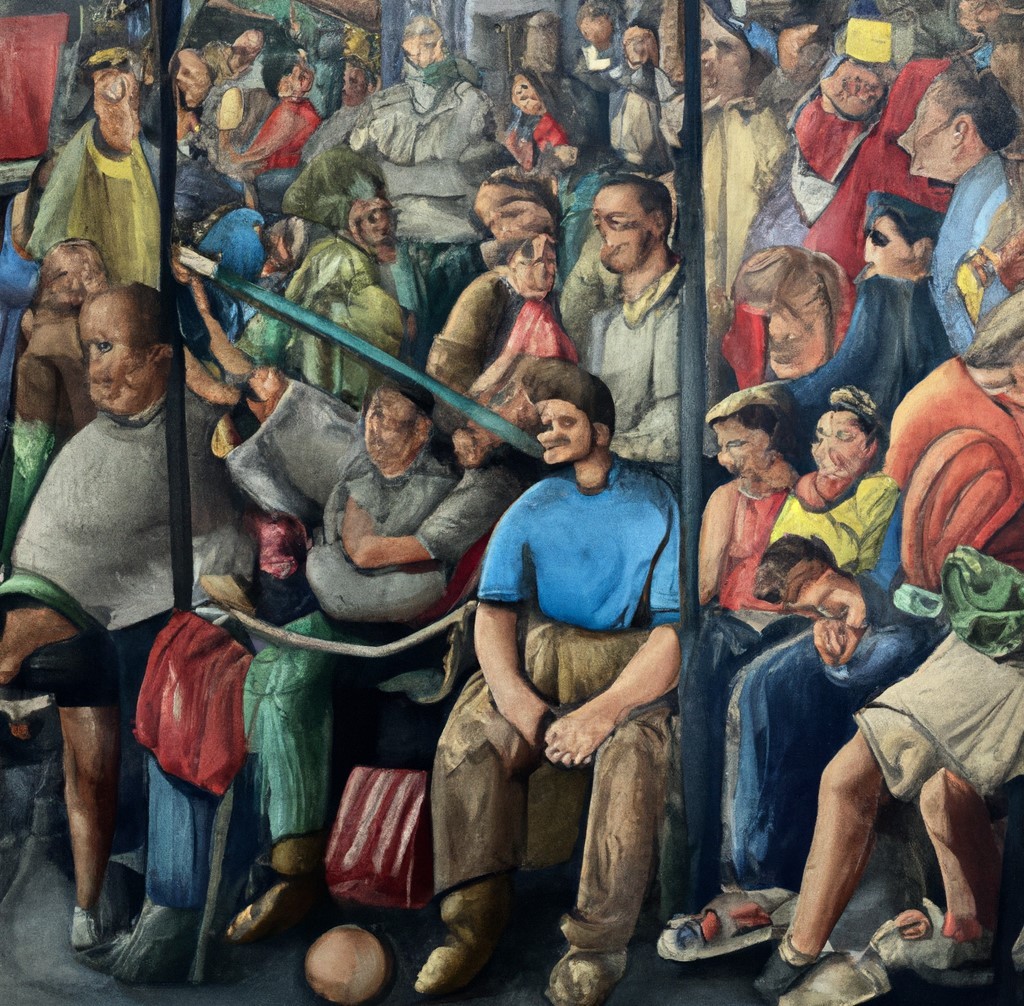
Art Athina 2023 Zappeion Hall 14 -17 September Lola Nikolaou Gallery | Booth R20 Dimitris Ameladiotis, Kostis Damoulakis, Thanasis Dapis, Dimitris Efeoglou, Pegy Kliafa, Stamatis Laskos

Art Athina 2023 Zappeion Hall 14 -17 September Lola Nikolaou Gallery | Booth R20 Dimitris Ameladiotis, Kostis Damoulakis, Thanasis Dapis, Dimitris Efeoglou, Pegy Kliafa, Stamatis Laskos
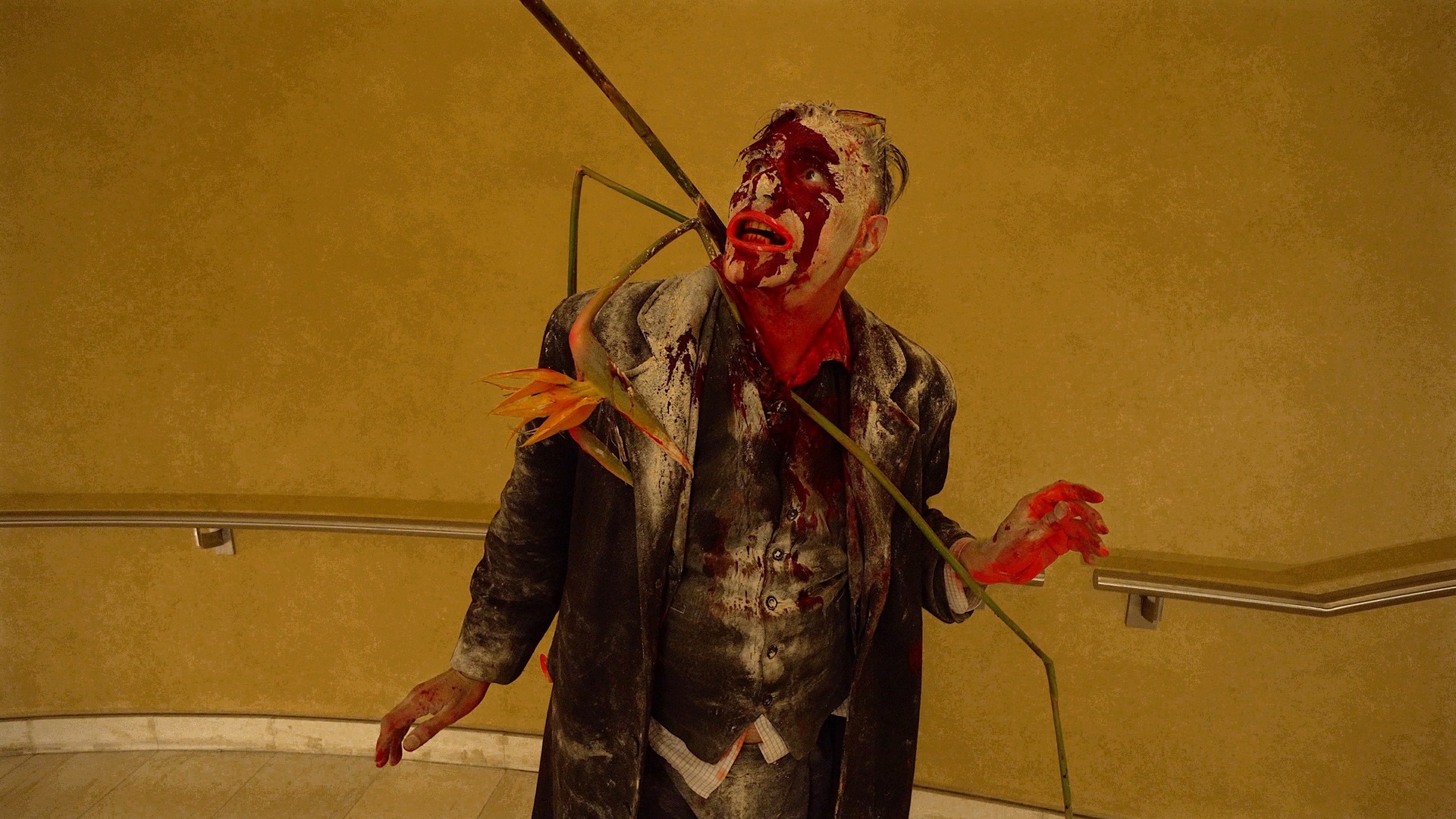
"Against Happycracy" A stand up tragedy in the form of a tricycle video installation with lecture and performance performance, with objects, masks, and theatrical excerpts on wonder, madness, the compulsory abolition of loneliness and the wreckage of existence. 'Not all madness is sacred. Not all chaos creates a harmonious order. Does not every blood herald a birth or a victory. Does not love always lead to a secret fire of intercourse. Not all wines are always traveled by an inspired god. Not every color is a painting. Not every mountain is Olympus. There is an important distinction between those rhapsodists whose works had their origins in an inspired madness and those, the others, who composed their verses based on their office and dedication to their art. The same is true of painters: there are professionals, methodical and efficient, but there is another kind of painters, those who are "fatalists", those who can barely control the impulses that drive their actions, barely rational, without looking to art for another horizon or a prize, and prefer to continue to thirst, to remain sick of the desire to penetrate that unspeakable surface that is for them art, and to return carrying a bundle of strange thorns, invoking beauty when horror is not unknown to them, singing in the fragile boat of their existence, when, not far away, the great ships with all that we have loved are burning in beds of desolation. To laugh as we gaze into hell. Isn't that what art sometimes suggests to us? A work of art is a lake in heat, a groove full of everything we are unable to mention without trembling. A work of art is a fire made of lost vineyards, of wrecked dreams, of black milk held lovingly in the arms of night. A work of art is one that warns us of the wandering of our minds and is the music that our anguish can compose while our daily routine mocks our flight by confusing our hours. Let us sing to the fragile ship of our existence, let us put this ship in our sea, the painting of our existence....'' Philip Tsitsopoulos , 2023
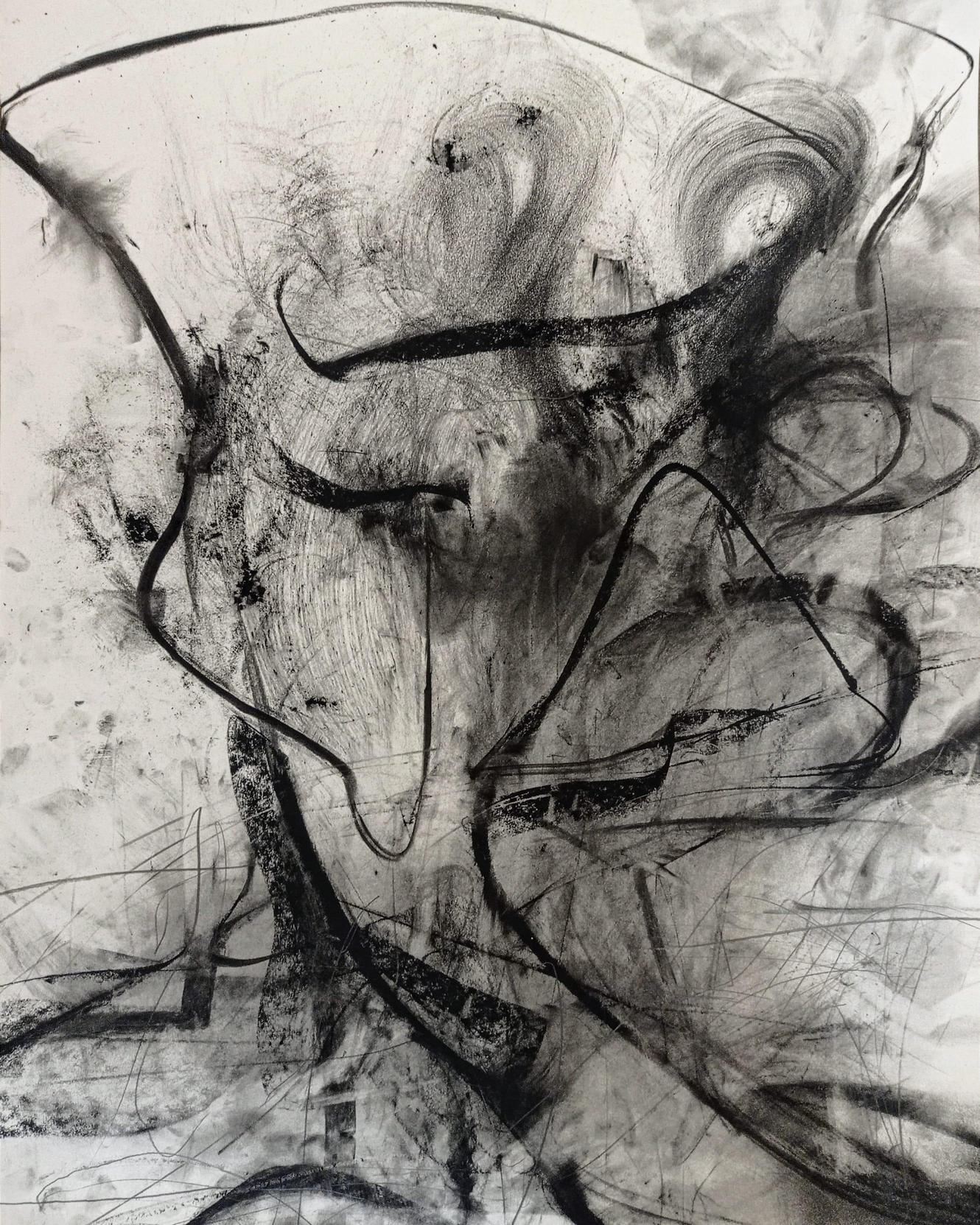
"Against Happycracy" A stand up tragedy in the form of a tricycle video installation with lecture and performance performance, with objects, masks, and theatrical excerpts on wonder, madness, the compulsory abolition of loneliness and the wreckage of existence. 'Not all madness is sacred. Not all chaos creates a harmonious order. Does not every blood herald a birth or a victory. Does not love always lead to a secret fire of intercourse. Not all wines are always traveled by an inspired god. Not every color is a painting. Not every mountain is Olympus. There is an important distinction between those rhapsodists whose works had their origins in an inspired madness and those, the others, who composed their verses based on their office and dedication to their art. The same is true of painters: there are professionals, methodical and efficient, but there is another kind of painters, those who are "fatalists", those who can barely control the impulses that drive their actions, barely rational, without looking to art for another horizon or a prize, and prefer to continue to thirst, to remain sick of the desire to penetrate that unspeakable surface that is for them art, and to return carrying a bundle of strange thorns, invoking beauty when horror is not unknown to them, singing in the fragile boat of their existence, when, not far away, the great ships with all that we have loved are burning in beds of desolation. To laugh as we gaze into hell. Isn't that what art sometimes suggests to us? A work of art is a lake in heat, a groove full of everything we are unable to mention without trembling. A work of art is a fire made of lost vineyards, of wrecked dreams, of black milk held lovingly in the arms of night. A work of art is one that warns us of the wandering of our minds and is the music that our anguish can compose while our daily routine mocks our flight by confusing our hours. Let us sing to the fragile ship of our existence, let us put this ship in our sea, the painting of our existence....'' Philip Tsitsopoulos , 2023
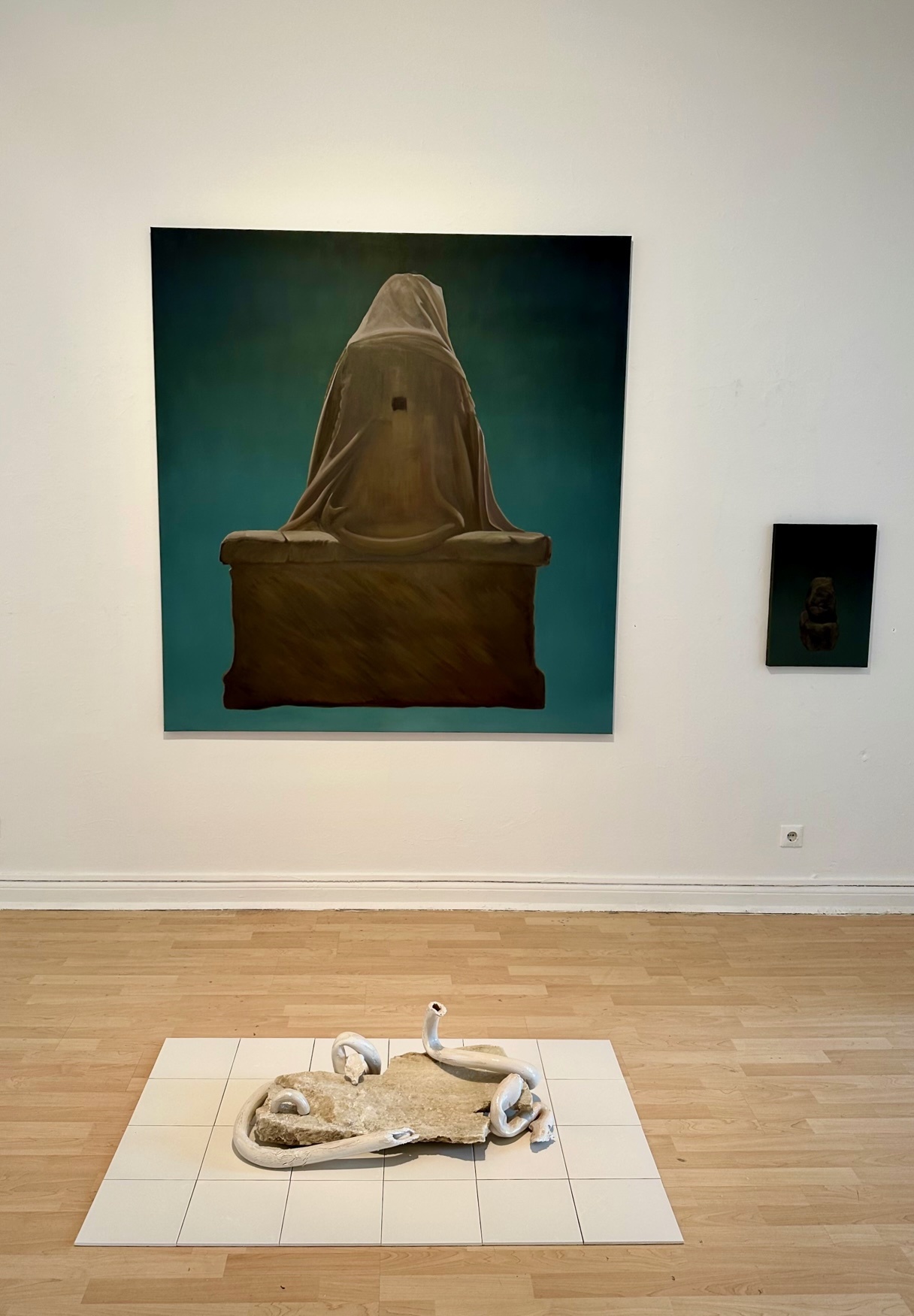
The unsettling event of an enigma (to be forever, but never to have been*) Lola Nikolaou Art Gallery Opening: Tuesday 3 October 2023 from 18:00 to 22:00 Duration: 3 -27 October Curator. The exhibition develops through an eccentric and associative dialogue towards an artistic exploration, which primarily choreographs the unseen, in-between space. The dialectical space between the works, as well as the space that potentially emerges through the interpretations of the viewers. The installation is constituted through space-time extensions and foldings. and contractions. All are the result of hypotheses and visual performances, in which the outcome of one or multiple events can ultimately be recorded. This collaborative installation, intends to engage the unseen as existent and the immaterial as active. It is an elaboration that, by extending the visible and the perceived, also constitutes a political act. The title of the exhibition recalls Man Ray's work, "L'Enigme d'Isidore Ducasse", 1920, and the subtitle refers to the homonymous phrase in Jorge Luis Borges' poem "The Enigmas", from the 1972 collection "Jorge Luis Borges, Selected Poems, 1923-1967". (Extract from the curators' text)

The unsettling event of an enigma (to be forever, but never to have been*) Lola Nikolaou Art Gallery Opening: Tuesday 3 October 2023 from 18:00 to 22:00 Duration: 3 -27 October Curator. The exhibition develops through an eccentric and associative dialogue towards an artistic exploration, which primarily choreographs the unseen, in-between space. The dialectical space between the works, as well as the space that potentially emerges through the interpretations of the viewers. The installation is constituted through space-time extensions and foldings. and contractions. All are the result of hypotheses and visual performances, in which the outcome of one or multiple events can ultimately be recorded. This collaborative installation, intends to engage the unseen as existent and the immaterial as active. It is an elaboration that, by extending the visible and the perceived, also constitutes a political act. The title of the exhibition recalls Man Ray's work, "L'Enigme d'Isidore Ducasse", 1920, and the subtitle refers to the homonymous phrase in Jorge Luis Borges' poem "The Enigmas", from the 1972 collection "Jorge Luis Borges, Selected Poems, 1923-1967". (Extract from the curators' text)
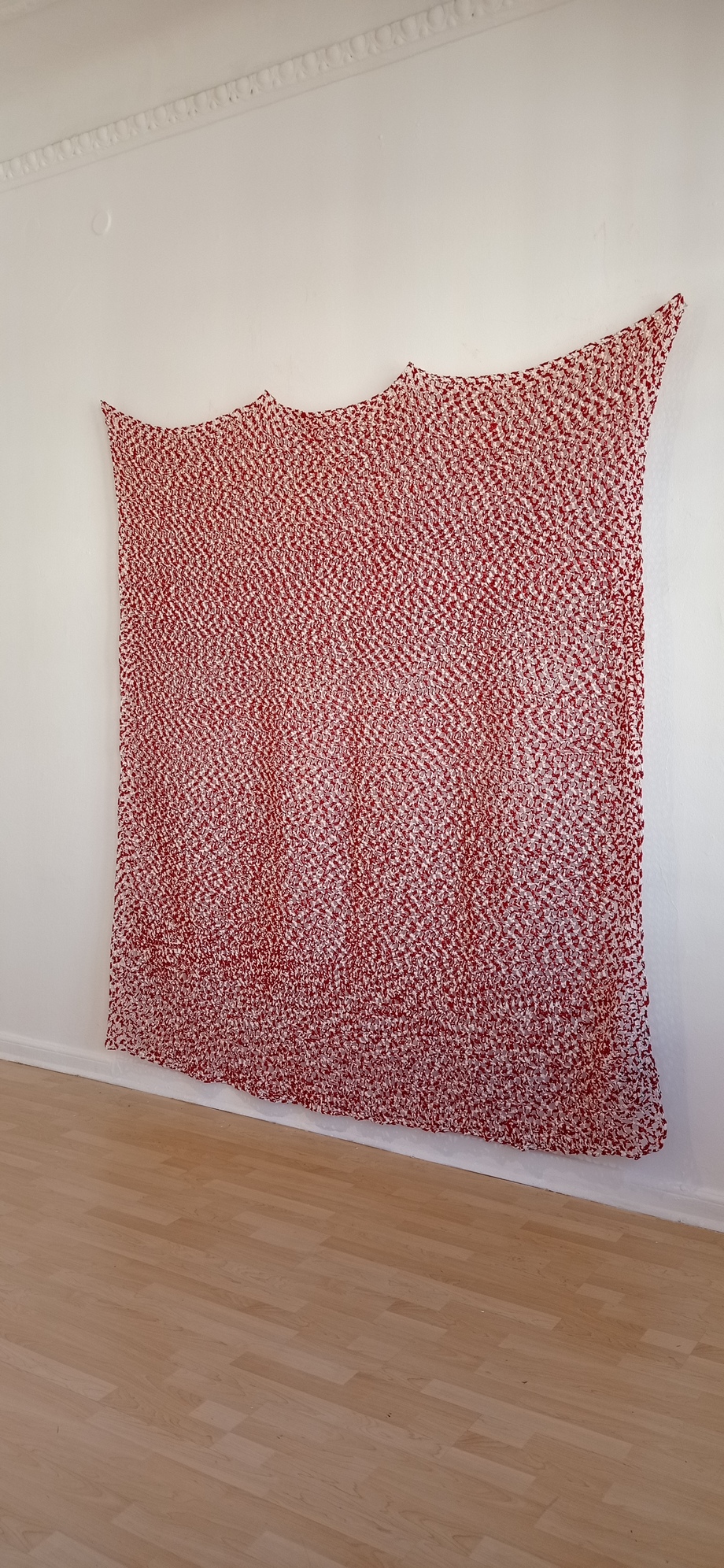
"blind prohibition" 02 -30.11.2023 Opening Thursday 2 November 2023, 16.00 - 21.30 Curating: Alexandros Kapetanou - Dimitris Kapetanou A phrase that contains its acoustic achromaticity and its aniconic chromaticity. A complex of terms and thoughts with contradictory feelings about the visible, removal, protection, enclosure, frustration, limits. The concept of limits is dialectically examined in the exhibition's two-part artwork. Through obsessive and endless repetitions of handwriting, sometimes in the form of knots of weaving and sometimes in the symbol of the dot, the use of the sign, the randomness and non-randomness it carries and the activation of touch are examined in the visual landscapes of the exhibition. The activation of the dipole between the signifier and the signified deconstructs and reimagines boundaries, attempting to expand and explore their interpretation. The collaborative works in the exhibition attempt to operate interventions, acting fluidly between the artistic and social realms. Seeking new creative outlets, they form installations, playing with materiality and surfaces, touching the "limits" of semiotics. The repetitive braille of the wall works is inspired by the homonymous code and meets the semiotic knots of the white and red forbidding tape of the sculptural installations.The dialogue box with the viewer removes any possibility of conventional reading of the content of their installation. The aluminium surfaces become closed to reading, but at the same time completely open to interpretation. The impossibility of direct interaction with the text and the emergence of the relief of its form make it a living pictorial enigma, which converses suggestively with the thousands of handmade knots that lie tirelessly around it. The reuse of the familiar material of the marking tape and the exploitation of its morphoplastic quality leads to a playfulness through its transformation into geometric and abstract forms, mocking the notion of prohibition. The observation of traditional techniques of knitting in suffocating loops and weaving in endless knots testifies to the experiential and painstakingly ascetic nature of the works. The meeting of the two media is problematic with regard to the restoration of human boundaries. The shape of the circle, sometimes through its transmutation into a dot and sometimes into a knot, delineates a symbol of reference, trauma and exclusion that are present in the visual language of the works. Their combined and innumerable sum performs an artistic osmosis between the meaning that boundaries carry in the simple everyday life and human existence, examining the context of universal prohibition and absolute freedom. text: Alexander Kapetanou
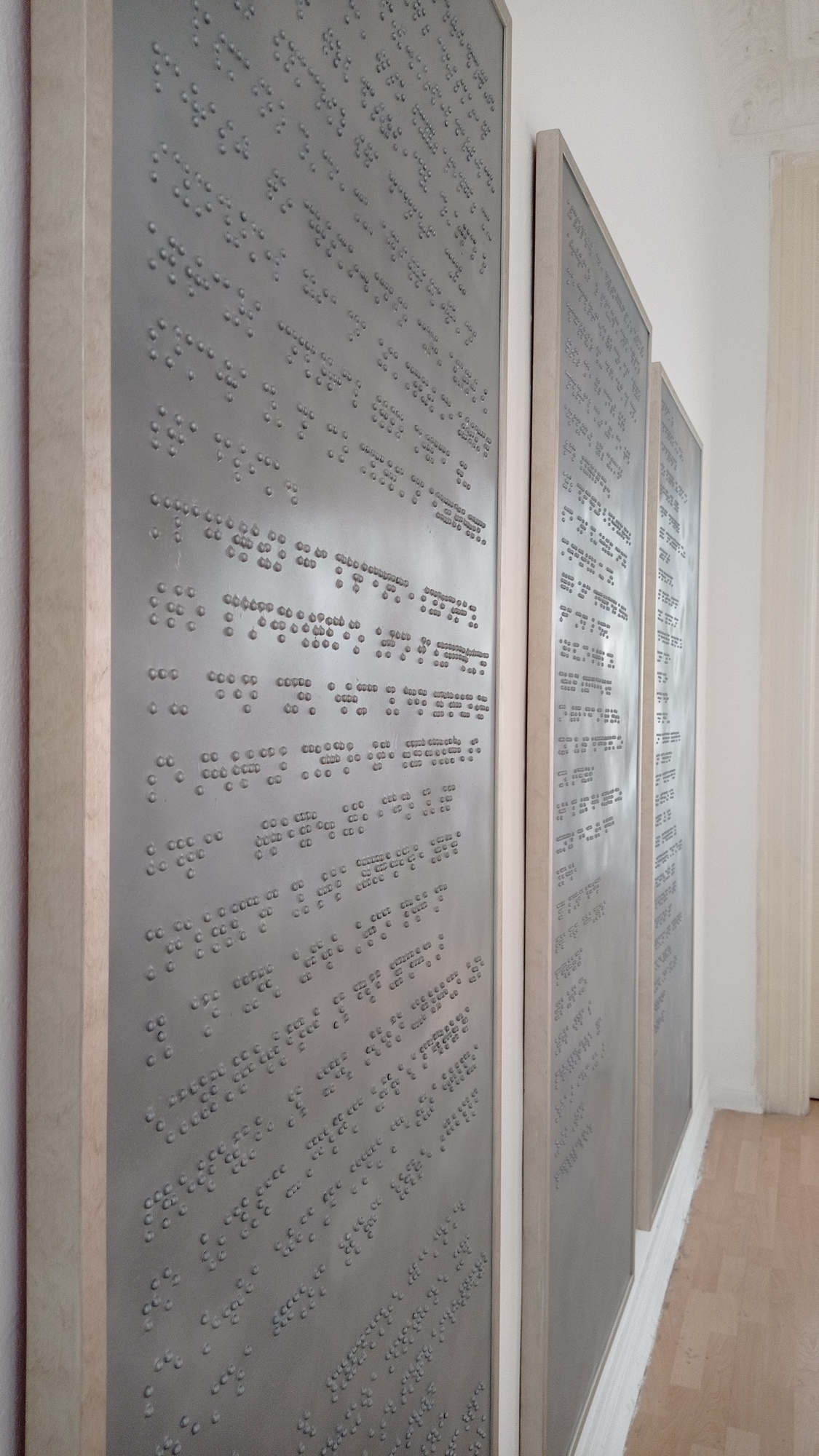
"blind prohibition" 02 -30.11.2023 Opening Thursday 2 November 2023, 16.00 - 21.30 Curating: Alexandros Kapetanou - Dimitris Kapetanou A phrase that contains its acoustic achromaticity and its aniconic chromaticity. A complex of terms and thoughts with contradictory feelings about the visible, removal, protection, enclosure, frustration, limits. The concept of limits is dialectically examined in the exhibition's two-part artwork. Through obsessive and endless repetitions of handwriting, sometimes in the form of knots of weaving and sometimes in the symbol of the dot, the use of the sign, the randomness and non-randomness it carries and the activation of touch are examined in the visual landscapes of the exhibition. The activation of the dipole between the signifier and the signified deconstructs and reimagines boundaries, attempting to expand and explore their interpretation. The collaborative works in the exhibition attempt to operate interventions, acting fluidly between the artistic and social realms. Seeking new creative outlets, they form installations, playing with materiality and surfaces, touching the "limits" of semiotics. The repetitive braille of the wall works is inspired by the homonymous code and meets the semiotic knots of the white and red forbidding tape of the sculptural installations.The dialogue box with the viewer removes any possibility of conventional reading of the content of their installation. The aluminium surfaces become closed to reading, but at the same time completely open to interpretation. The impossibility of direct interaction with the text and the emergence of the relief of its form make it a living pictorial enigma, which converses suggestively with the thousands of handmade knots that lie tirelessly around it. The reuse of the familiar material of the marking tape and the exploitation of its morphoplastic quality leads to a playfulness through its transformation into geometric and abstract forms, mocking the notion of prohibition. The observation of traditional techniques of knitting in suffocating loops and weaving in endless knots testifies to the experiential and painstakingly ascetic nature of the works. The meeting of the two media is problematic with regard to the restoration of human boundaries. The shape of the circle, sometimes through its transmutation into a dot and sometimes into a knot, delineates a symbol of reference, trauma and exclusion that are present in the visual language of the works. Their combined and innumerable sum performs an artistic osmosis between the meaning that boundaries carry in the simple everyday life and human existence, examining the context of universal prohibition and absolute freedom. text: Alexander Kapetanou
for Nikos Kryonidis Thalia Stephanidou Art Historian/Curator "...at that time, the artist was free... On a wall with a fresh souvah, splashed with shiny sandal* or fermented with milk and saffron**, he painted someone crossing with weary feet a meadow meadow strewn with white asphodel, someone on whose eyelids all the Trojan War rests..." [ The Critic as Creator, Oscar Wilde ] "...look at the mimosas*** I see. Imagine the mimosas. What you don't see.... The mimosa is the painter's nymph..." [ The Last Painting or Portrait of God, Hélène Cixous ] Nikos Kryonidis discovers and deposits, incessantly, shapes of thought or feelings as forms of visual expression with the determination of an adult and childlike enthusiasm at the same time. His "painterly" texts function as sketches of visual discourse that form episodes of graphisms, sometimes implying and sometimes emphatically emphasizing the primary tools of the act of painting. These are undoubtedly developments of experimentation and gymnastics, attempts to map an associative narrative, even impressions of successive patterns that multiply the perception of the enigma, expanding its interpretative potential. His creaturely landscapes, similar to masses of colour suspended in a kind of equilibrium on the canvas, function as geographies of the imaginary that seem to trap shapes of flocks of birds in fluid lines of the horizon. Again, perhaps they convey emotions of psychic order from an inner vision, without forming anything immediately recognizable. I had previously identified his improvisational practice as "happenings on paper" and as networks of color flows and fleeting images or words that promote and foster independent thought and the polysemy of painterly performance. A painting act that struggles to trace the present of the moment in that elusive, erotic and playful condition where the imperative of "come further away" - "go closer" is confessed. Today, mainly due to his recurring obsessions and selective retrospectives, I call his personal idiom a visual diary of his purely personal and experiential wanderings, a diary beyond goals and final destination.Nikos Kryonidis's poetics moves in search of the inexplicable and indeterminate, proposing incessant transmutation, a prolonged and constant delirium for what is a trace of memory and emotion intertwined with creatures of the imagination and with what is here and now present. In an attempt to decipher the poetics of this type, Nietzsche's aphorism "you have to guess the painter to understand the image" helps us to suspect the dialectical relationship between the image produced as the body of the painting and the body of the creator who produces it. Thalia Stephanidou, Art Historian/Critic - Curator _ _ _ * Fossil pigment of intense red [ sandyx or sandykos ] ** Strong yellow pigment derived from the stamens of the saffron plant [ saffron or saffron(s) ] *** Mimosa is a genus of plants of the order Mimosa. The name mimosa, feminine of mimos, is of Greek origin. The best known species of the genus is mimosa pudica, also known as touch-me-not (honteuse femelle/sensitive).
for Nikos Kryonidis Thalia Stephanidou Art Historian/Curator "...at that time, the artist was free... On a wall with a fresh souvah, splashed with shiny sandal* or fermented with milk and saffron**, he painted someone crossing with weary feet a meadow meadow strewn with white asphodel, someone on whose eyelids all the Trojan War rests..." [ The Critic as Creator, Oscar Wilde ] "...look at the mimosas*** I see. Imagine the mimosas. What you don't see.... The mimosa is the painter's nymph..." [ The Last Painting or Portrait of God, Hélène Cixous ] Nikos Kryonidis discovers and deposits, incessantly, shapes of thought or feelings as forms of visual expression with the determination of an adult and childlike enthusiasm at the same time. His "painterly" texts function as sketches of visual discourse that form episodes of graphisms, sometimes implying and sometimes emphatically emphasizing the primary tools of the act of painting. These are undoubtedly developments of experimentation and gymnastics, attempts to map an associative narrative, even impressions of successive patterns that multiply the perception of the enigma, expanding its interpretative potential. His creaturely landscapes, similar to masses of colour suspended in a kind of equilibrium on the canvas, function as geographies of the imaginary that seem to trap shapes of flocks of birds in fluid lines of the horizon. Again, perhaps they convey emotions of psychic order from an inner vision, without forming anything immediately recognizable. I had previously identified his improvisational practice as "happenings on paper" and as networks of color flows and fleeting images or words that promote and foster independent thought and the polysemy of painterly performance. A painting act that struggles to trace the present of the moment in that elusive, erotic and playful condition where the imperative of "come further away" - "go closer" is confessed. Today, mainly due to his recurring obsessions and selective retrospectives, I call his personal idiom a visual diary of his purely personal and experiential wanderings, a diary beyond goals and final destination.Nikos Kryonidis's poetics moves in search of the inexplicable and indeterminate, proposing incessant transmutation, a prolonged and constant delirium for what is a trace of memory and emotion intertwined with creatures of the imagination and with what is here and now present. In an attempt to decipher the poetics of this type, Nietzsche's aphorism "you have to guess the painter to understand the image" helps us to suspect the dialectical relationship between the image produced as the body of the painting and the body of the creator who produces it. Thalia Stephanidou, Art Historian/Critic - Curator _ _ _ * Fossil pigment of intense red [ sandyx or sandykos ] ** Strong yellow pigment derived from the stamens of the saffron plant [ saffron or saffron(s) ] *** Mimosa is a genus of plants of the order Mimosa. The name mimosa, feminine of mimos, is of Greek origin. The best known species of the genus is mimosa pudica, also known as touch-me-not (honteuse femelle/sensitive).
2024

Takis Veremis Yannis Gagrinas_Dimitris Efeoglou_Christos Kalfas_Kiriaki Mavrogeorgi_Ilias Christopoulos 11.01 - 09.02.2024 Opening Thursday 11 January 2024, 18.00 - 21.30 The photographic prints of Takis Veremis, the "still lifes" of Yannis Gagrinas, the improvisational graphic works of Dimitris Efeoglou, the painted fictions of Christos Kalfas, the enigmatic micro-sculpture of Kyriaki Mavrogeorgis and the clay sculptures of Ilias Christopoulos, will come together at the gallery of Lola Nikolaou from 11 January to 9 February 2024.
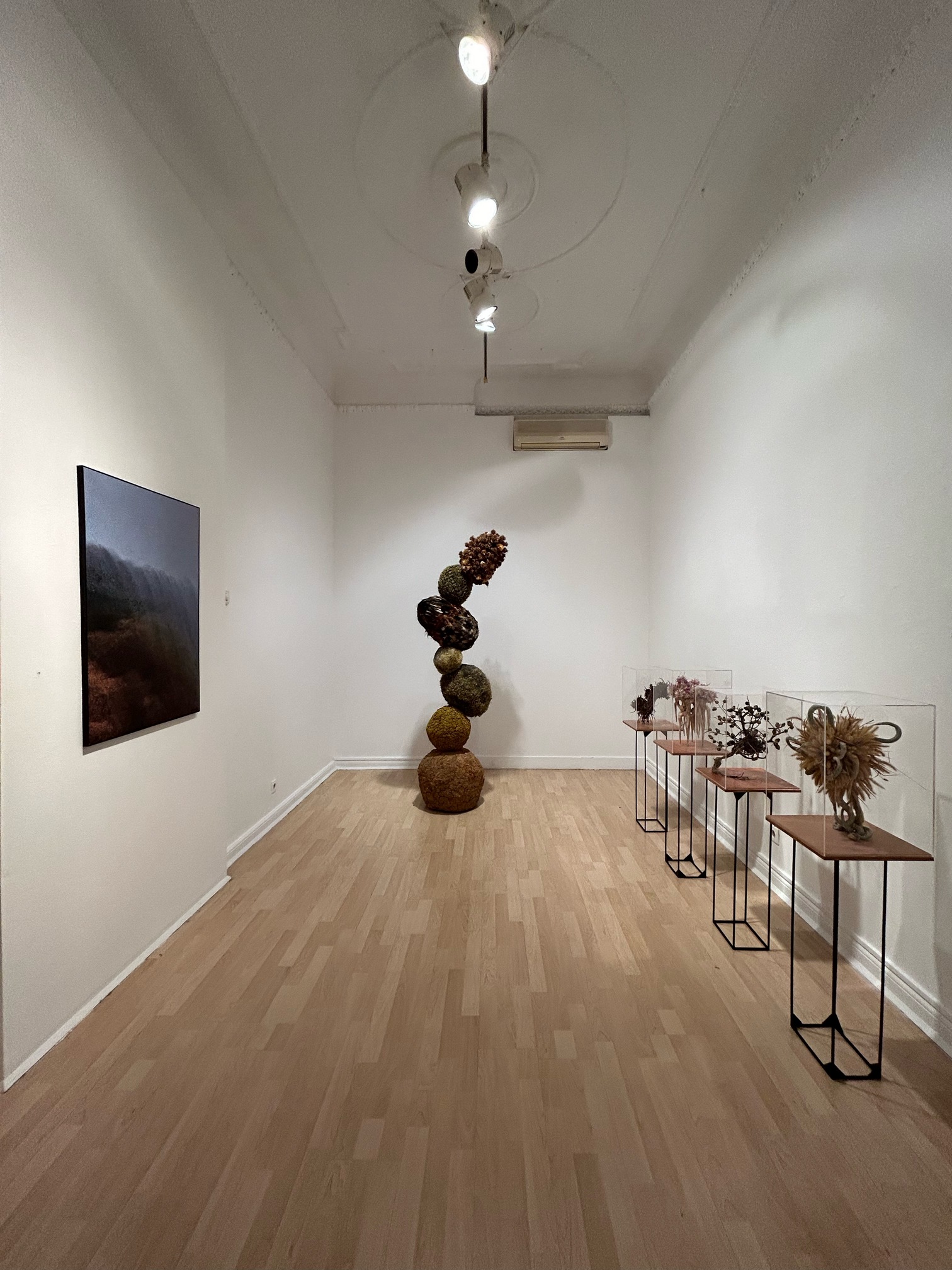
Takis Veremis Yannis Gagrinas_Dimitris Efeoglou_Christos Kalfas_Kiriaki Mavrogeorgi_Ilias Christopoulos 11.01 - 09.02.2024 Opening Thursday 11 January 2024, 18.00 - 21.30 The photographic prints of Takis Veremis, the "still lifes" of Yannis Gagrinas, the improvisational graphic works of Dimitris Efeoglou, the painted fictions of Christos Kalfas, the enigmatic micro-sculpture of Kyriaki Mavrogeorgis and the clay sculptures of Ilias Christopoulos, will come together at the gallery of Lola Nikolaou from 11 January to 9 February 2024.

George Tsakiris Handicrafts and More 15.02 -15.03.2024 Opening Thursday 15 February 2024, 18.00 - 21.30 George Tsakiris is a unique case of contemporary Greek art. He artistically combines the ecological-biological-agricultural process as an organizer of the ways in which the painterly gaze organizes, through installations-constructions and environments, the conditions in which nature functions in its absolute self-sufficiency. The art historian Yannis Bolis writes about the exhibition of George Tsakiris, among other things: The consistency, coherence and breadth of his quest, the constant experimentation, the crucial reflection and the intense experiential element are those characteristics that distinguish the course of George Tsakiris from the 1970s to the present day, composing the image of an accomplished creator who treats art as an attitude of life, or more correctly in his case art is identified with life itself: From his sculptures, collages and constructions, his paintings and prints to his "still lifes", his yuks, his velvets and his installations with stork nests, tree trunks and woods, his aquariums, greenhouses, dovecotes and snail farms, frogs and spinning machines, or the works with moths, wasps, wheat seeds, eggs, pumpkins, pumpkins, composts, must, grape seeds, grape must and wines...George Tsakiris is Professor Emeritus of the School of Fine Arts of the Aristotle University of Thessaloniki.He has presented his work in more than 40 solo exhibitions, has participated in numerous group exhibitions in Greece and abroad and his works are part of many public and private collections around the world.

George Tsakiris Handicrafts and More 15.02 -15.03.2024 Opening Thursday 15 February 2024, 18.00 - 21.30 George Tsakiris is a unique case of contemporary Greek art. He artistically combines the ecological-biological-agricultural process as an organizer of the ways in which the painterly gaze organizes, through installations-constructions and environments, the conditions in which nature functions in its absolute self-sufficiency. The art historian Yannis Bolis writes about the exhibition of George Tsakiris, among other things: The consistency, coherence and breadth of his quest, the constant experimentation, the crucial reflection and the intense experiential element are those characteristics that distinguish the course of George Tsakiris from the 1970s to the present day, composing the image of an accomplished creator who treats art as an attitude of life, or more correctly in his case art is identified with life itself: From his sculptures, collages and constructions, his paintings and prints to his "still lifes", his yuks, his velvets and his installations with stork nests, tree trunks and woods, his aquariums, greenhouses, dovecotes and snail farms, frogs and spinning machines, or the works with moths, wasps, wheat seeds, eggs, pumpkins, pumpkins, composts, must, grape seeds, grape must and wines...George Tsakiris is Professor Emeritus of the School of Fine Arts of the Aristotle University of Thessaloniki.He has presented his work in more than 40 solo exhibitions, has participated in numerous group exhibitions in Greece and abroad and his works are part of many public and private collections around the world.

George Lazogas_Thanasis Dapis 21.03 - 18.04.2024 Opening Thursday 21 March 2024, 18.00 - 21.30 Curated by Efthymis Lazogas, Professor of Art History Yorgos Lazogas, conceptual artist and professor emeritus of the ASFA, together with Thanasis Dapis, an important artist of the younger generation, will open their works at the Lola Nikolaou Gallery from 21 March. As the curator of the exhibition, Professor of Art History Efthymis Lazogas, points out about George Lazogas: Lazogas always maintained that "The fragment is the whole". In his visual idiom, the fragment carries the memory of the image of the whole, but remains as a record of the minimum as it avoids the chatter of narrative, listening to the silence and the poetry of the non finito. It is an allusion, allegory, and symbol playing between the imagination and the ineffable. In this sense, the fragment is the work, its origin and its generative core, at the same time documenting the permanent impossibility of the idea to be transferred unchanged into matter. The idea through the fragment remains a fragment, a fragmentary reminder of the whole, giving the image an enigmatic dimension. The fragment, posing the enigma, "neither tells nor hides but means". By its very nature it negotiates the idea of inexorable time, of loss, of memory, of destruction. The very memory implied by the fragment also functions in a fragmentary way. Through the superimpositions of memories, the mechanisms of memory shatter the image of the whole, removing useless information and allowing only the fragments that contain the essential to surface. Culturally, we live through the traces of the past, we have in our luggage memories - fragments of accumulated images of older cultures that are constantly recreated and reconstructed each time in a new proposal. About Thanasis Dapis the curator states: Without losing any of the innocence of childlike writing and thinking, Dapis attempts, with his unpretentious instinctive writing as a morphoplastic weapon, a new abstract narrative that tends to introduce multiple readings into his work. Colour, drawing and composition take centre stage. Dapis behind each drawing he formulates invents a personal visual alphabet through symbols, codes and concepts that are introduced in each work, thus challenging the viewer to feel his thoughts. He traces simple, archetypal symbols such as the sun and the moon, the house and the tree, the apple and the snake, flowers and animals, creating allusions and allegories. On the other hand, it expresses emotions, situations, weather phenomena, the coexistence of good and evil, life and death with colours, faces, shapes and letters. His colours themselves are pure, pure colours are also used as symbols serving the charm and dynamics of original writing, Thanasis Dapis' art keeps the joy of life unchanged in it, winning the bet of the lost meaning of simplicity while keeping alive the primary feeling of the excitement of discovering the world when we were children. Excerpt from the text by Efthymis Lazogas for the exhibition

George Lazogas_Thanasis Dapis 21.03 - 18.04.2024 Opening Thursday 21 March 2024, 18.00 - 21.30 Curated by Efthymis Lazogas, Professor of Art History Yorgos Lazogas, conceptual artist and professor emeritus of the ASFA, together with Thanasis Dapis, an important artist of the younger generation, will open their works at the Lola Nikolaou Gallery from 21 March. As the curator of the exhibition, Professor of Art History Efthymis Lazogas, points out about George Lazogas: Lazogas always maintained that "The fragment is the whole". In his visual idiom, the fragment carries the memory of the image of the whole, but remains as a record of the minimum as it avoids the chatter of narrative, listening to the silence and the poetry of the non finito. It is an allusion, allegory, and symbol playing between the imagination and the ineffable. In this sense, the fragment is the work, its origin and its generative core, at the same time documenting the permanent impossibility of the idea to be transferred unchanged into matter. The idea through the fragment remains a fragment, a fragmentary reminder of the whole, giving the image an enigmatic dimension. The fragment, posing the enigma, "neither tells nor hides but means". By its very nature it negotiates the idea of inexorable time, of loss, of memory, of destruction. The very memory implied by the fragment also functions in a fragmentary way. Through the superimpositions of memories, the mechanisms of memory shatter the image of the whole, removing useless information and allowing only the fragments that contain the essential to surface. Culturally, we live through the traces of the past, we have in our luggage memories - fragments of accumulated images of older cultures that are constantly recreated and reconstructed each time in a new proposal. About Thanasis Dapis the curator states: Without losing any of the innocence of childlike writing and thinking, Dapis attempts, with his unpretentious instinctive writing as a morphoplastic weapon, a new abstract narrative that tends to introduce multiple readings into his work. Colour, drawing and composition take centre stage. Dapis behind each drawing he formulates invents a personal visual alphabet through symbols, codes and concepts that are introduced in each work, thus challenging the viewer to feel his thoughts. He traces simple, archetypal symbols such as the sun and the moon, the house and the tree, the apple and the snake, flowers and animals, creating allusions and allegories. On the other hand, it expresses emotions, situations, weather phenomena, the coexistence of good and evil, life and death with colours, faces, shapes and letters. His colours themselves are pure, pure colours are also used as symbols serving the charm and dynamics of original writing, Thanasis Dapis' art keeps the joy of life unchanged in it, winning the bet of the lost meaning of simplicity while keeping alive the primary feeling of the excitement of discovering the world when we were children. Excerpt from the text by Efthymis Lazogas for the exhibition
